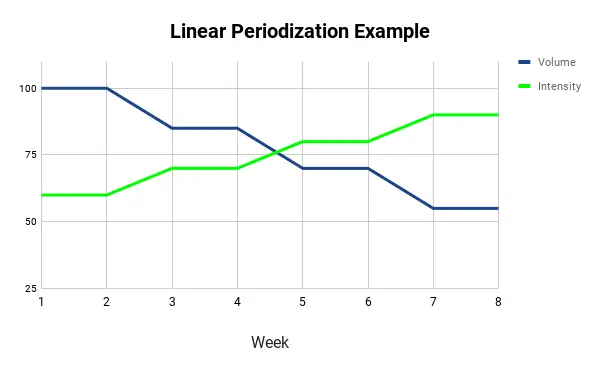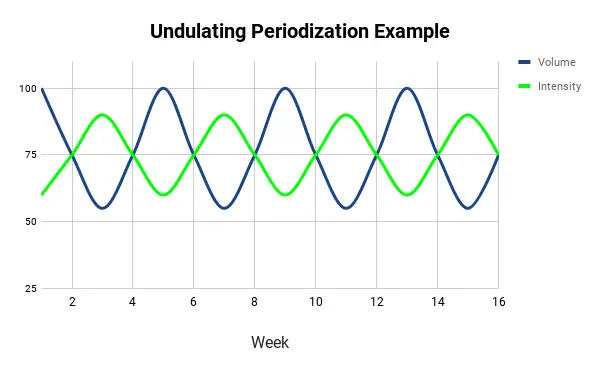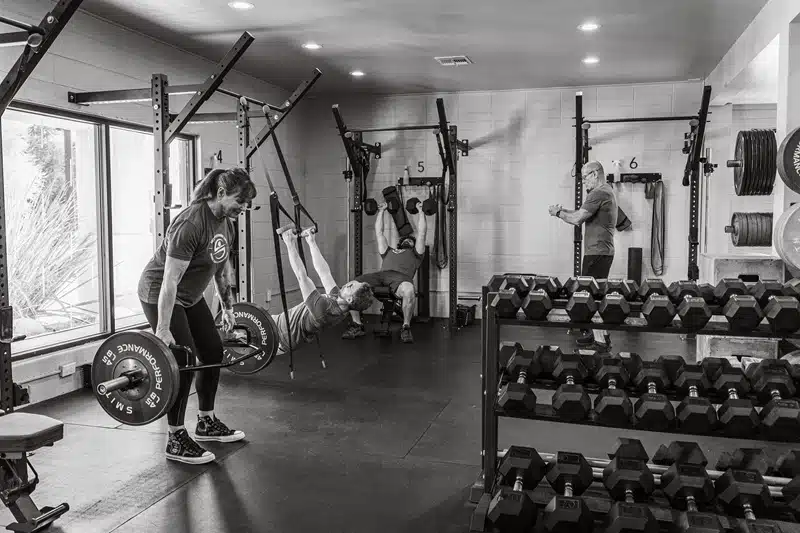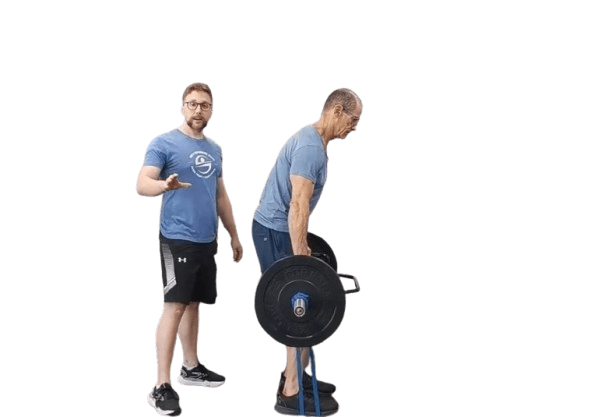Milo of Croton, a wrestling, bull-carrying, 20 pounds of meat-eating, 10 liters of wine-drinking man from Greece, is the definition of progression. Most people know the story of Milo, even if they don’t know his name. Milo carried a bull around on his shoulders. Chuze and LA Fitness were not around in ancient Greece so the Greeks created their own strength training methods.
Milo intuited the importance of planned, progressive training. As a boy, he picked up a young calf and carried it around on his shoulders (because, why not?). The next day, he carried the calf again, and again the next day, and the next, and continued for FOUR years. The calf grew into a massive bull; Milo grew as well (#gainz).
The daily training allowed Milo to pick up a full-grown bull, a mythical feat of strength.
Our point? Progressive training regimens produce benefits that are hard to believe.

Photo by Hans Eiskonen on Unsplash
What is progression in strength training?
According to the Oxford dictionary, progression is “the process of developing or moving towards a more advanced state.” Have you heard a better definition of strength training? Our training methods focus on constant improvement while avoiding stagnation. Strength training never gets easy or it’s not strength training. The body adapts, you gain strength, and the weight you did before will not produce the same results as it once did. You push more weight if it seems easy.
Progression includes manipulating sets and repetitions (periodization), changing the exercises performed or by increasing training frequency.
Linear Periodization
Manipulating sets and repetitions get a little fuzzy for people who are new to strength training. A simple way to think about work is the weight x repetitions. For example, an athlete squatting 225 lbs for five repetitions moved a total of 1,125 lbs through their set. Next week, if they do 230 lbs for five repetitions, then they moved 1,150 pounds (more work!). With a training program, a coach modifies variables to increase the work performed, using sets and reps (volume) and load (intensity) the most.
Linear periodization is basic and effective organization strategy of volume and intensity. Periodization is simply an organized plan, and linear gradually increases or decreases the variables. A linear periodized program gradually increases the amount of work performed. Starting with high repetitions and low load (weight) and gradually progressing to lower repetitions and higher weight, is one example.
This program is effective for beginners. Advanced lifters also need to revisit this program from time to time. High volume and low intensity at the beginning of the program allows for movement master; a strategy for new lifters working on movement and patterns. Beginner’s movement patterns tend to be less than ideal or to be more accurate, terrible. Movement mastery takes time and practice. No one has perfect form. Even the most elite lifters in the world use coaches, but a perfect standard exists that we compare movement against and we aim to improve the movement each time it is performed. We use guided repetition to improve movement. Creating a solid foundation of proper movement mechanics is the focus in the beginning because a lifter is only as strong as the movement foundation. You are setting yourself up for failure if your movement foundation is poor.
The repetitions decrease and the weights increase with this form of linear periodization. Intensity grows as movement and confidence improves, and the body adapts to the work. This ensures the body is stimulated and positive adaptations result. Learning to move properly with a load leads to more success later in their training.
Another example of linear periodization is keeping the repetitions the same, but increasing the intensity (load). For example, an athlete performs five sets of five repetitions week after week but increases the load (5-10 pounds a week). This increases the work performed each week, leading to positive adaptations.
Undulating Periodization
Undulating Periodization is more complicated because volume and intensity fluctuate on a weekly or daily basis (see below). When volume is high, intensity is low, and when intensity is high, volume is low. This is the same concept as linear, but more frequent. We use this after athletes have been in a linear periodized program. This change produces a new training stimulus, resulting in continued positive adaptations.
Exercise Progression
Strength coaches will also progress a program by implementing more advanced exercises. A squat is a great example. Many athletes at our gym start with a bodyweight squat. This may seem elementary, but many athletes have no idea how to properly squat. Remember, you are only as strong as your foundation. Proper motor patterns lead to success in the weight room, sport, and life in general. Also, if the athlete has never strength trained (no matter how fit they are in their sport), this is often enough of a stimulus to lead to adaptations. The goal of strength training is not to blow the athlete up and make them sore…anybody can create a workout to do that, the goal is to gradually progress the amount of work they can perform.
We can begin adding external weight when the bodyweight squat becomes easy and the athlete is feeling more comfortable with the movement. We do this in the form of a kettlebell goblet squat. The external load of the kettlebell increases the intensity. We also encourage the athlete to increase this load each week (if the technique looks good). After weeks of increasing the load and dropping the volume, the athlete becomes a more comfortable moving weight. The weight they once thought was impossible to lift, (at least with proper mechanics) is now easy for them. Now we progress the movement again.
The next step in a squat would be to perform the movement with a barbell (barbell back squat or front squat). This allows for further loading and increases the fun. (Keeping the training new and fresh is also a key to program adherence and success). We apply this to every movement in the gym based on our foundation movements.
Frequency
Frequency is the simplest progression. I recommend strength training two to three times a week for novices. There will be soreness and proper recovery is important. The positive adaptations (increases in strength) that we are looking for, won’t occur without proper recovery. When the athlete becomes accustomed to this training frequency then we can increase it. This will allow for further progression.
Why do progressions matter in a workout program?
The answer is pretty simple. It leads to greater positive adaptations (increases in strength). You are not training efficiently without a plan. It is like trying to cook a five-star meal when you’re not a chef and you have no recipe. The food may be edible, but you will have more consistent success with direction.
No one wants to put time and energy into anything without getting results, which is exactly what happens if you train without a plan. People go to the gym with no plan at all or a plan that they have been doing over and over for years. Is it any wonder why they aren’t seeing results? Our bodies are lazy (efficient would be another term for it). When the person started that plan, it was new and stress was placed on the body that it had never experienced, so it adapted. After a while, the same stimulus isn’t enough to create further adaptation. The body simply thinks “I’ve done this before” so it doesn’t put any energy into adapting further. However, your body never gets used to the stimulus if you continue to progress your program. It is constantly being exposed to a stimulus that it must adapt to.
On the other end of the spectrum, a well-planned program also prevents overtraining. We all know these types of people as well. The “balls to the wall”, “never stop”, and “more is always better” type of people. This is not the smartest way to train either. Your body interprets all types of stress (training, work, life, emotions, etc.) in the same way. You will not have positive adaptations if your body is constantly undergoing stress and never gets time to recover. A progressive plan with built-in recovery periods allows for recovery.
A plan is crucial to getting the most out of your training.
How do we use progression in your Health and Human Performance Program?
Planned progressions are a big part of our programs at Smith Performance Center. The level system takes into account progressions as far as load, volume, and exercise selection. We progress athletes on a micro and macro scale. We compare our levels to those in martial arts. As you progress through the program, it becomes more and more advanced and standards must be met before you are allowed to advance to the next level.
Green, our first level, utilizes only kettlebells and dumbbells as the external load and uses basic linear periodization. Familiarizing the athlete with the movements and creating a solid foundation of mechanics is the goal of Green. If the standards are met at the end of the level, they advance to the next level (Blue). Blue introduces barbells, still has a heavy emphasis on mechanics, and also utilizes linear periodization. These levels continue to advance in both periodization complexity and exercise complexity.
This model is safe because it doesn’t give the athletes more than they can handle, allows for movement mastery, and also introduces new movements slowly.
Common issues we hear when people do not want to progress in their strength training
I cannot progress that fast
Our goal with progressions is to continue to stress the body, not for athletes to progress beyond their means. We never want to increase weight to the point of losing proper form. If everything (technique) is looking good, we are very comfortable with them increasing. Adding weight is never more important than correct form.
Listening to your body is important. There are going to be weeks or even days, where increasing 5-10 pounds is no problem and others where it seems impossible. This is completely natural. The goal is that we are progressing over time (think big picture), and off days or weeks are normal.
More weight could hurt me
The whole point of progression is to become more comfortable with higher loads. This does not happen overnight. We are looking for increases over time, not instantaneously. Be patient. I cannot stress enough, that it is never acceptable to increase weight enough that form is lost. If the form is lost, the benefits of the exercise are lost and you are putting yourself at risk for injury.
Mistakes in Strength Training Progressions
Progressing too fast and too slow
Progressing too fast or too slow can lead to problems. Progressing too fast can lead to injury (lifting a weight that is too heavy or performing a movement that you are not ready for), overtraining (overstressing the body, resulting in decreased performance), or simply a loss in movement mechanics (this is never good). The goal with progress is to continue to stress the body sufficiently, but not overstress it.
On the other end, progressing too slowly results in, well…nothing. You are not making positive adaptations at the rate you could be if progressions aren’t in place or they are too slow.
Key Takeaways
Many people understand the importance of strength training, but few understand the importance of having a planned, progressive program. Would you give your money to an investment banker who didn’t have a plan? For your future self’s sake, I hope not. Would you take a cross-country road trip without google maps or apple maps going? Not unless you enjoy getting lost. The same result will happen if you train without a plan, you will not end up where you want to be. Having a plan is vital to the success of your strength training.









